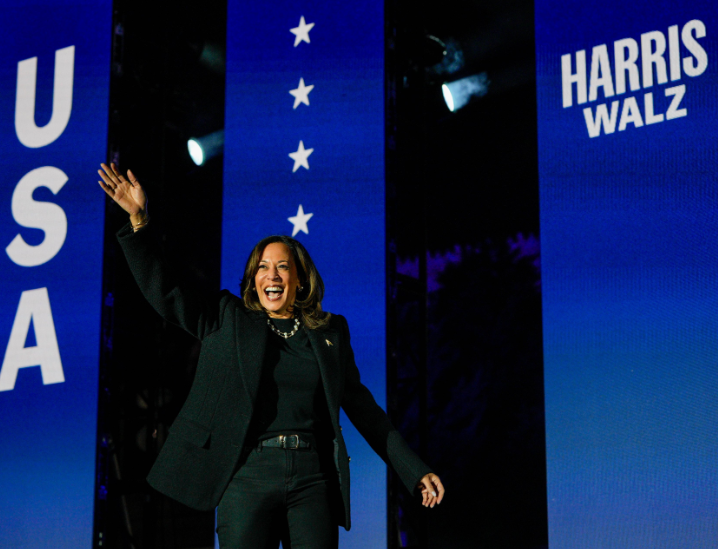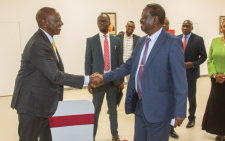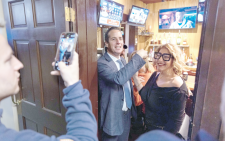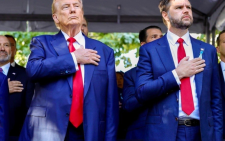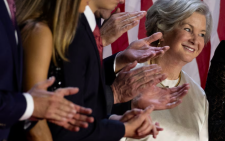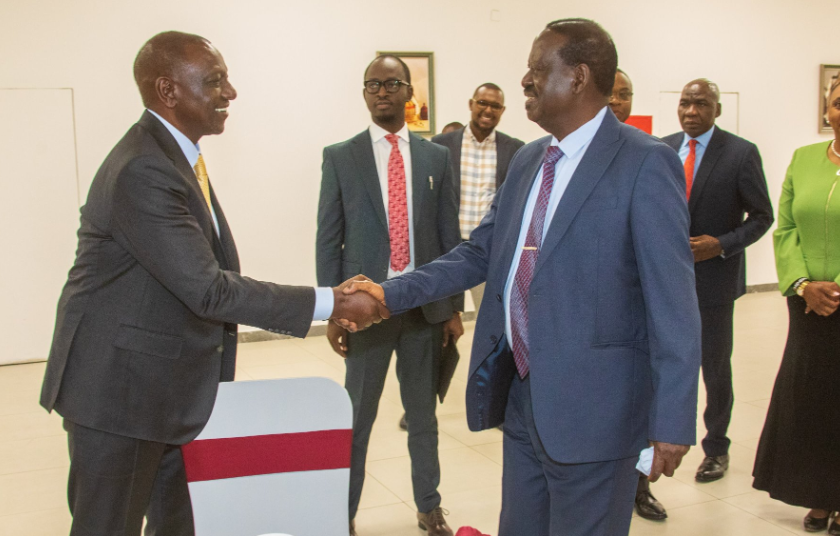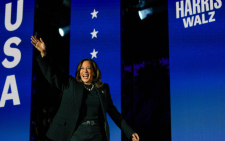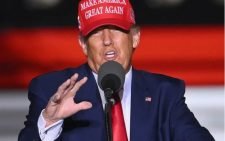Kamala Harris speaking at Howard University was to be an image for history: a record of the first woman president, not to mention the first Black female president and the first president of South Asian descent, giving her victory speech.
Instead, what turned out to be her concession speech became the coda to an unprecedented election; the end of one story, rather than the beginning of another.
That did not mean that Harris was any less a pioneer, or a role model, in the moment. Even if what she was modeling was how to make over the public face of defeat.
Standing before the red bricks and the white columns that provide the backdrop for Howard commencements, Harris (pictured) wore a businesslike pantsuit in a muddy burgundy that read, through the screen, as almost purple (interpret that as you will).
The jacket was buttoned, an American flag pin bright against one lapel, and the pants were cut with a bit of a flare at the calf. With it, she wore her usual pumps, pearl earrings and a satin blouse in the same eggplant shade, complete with a cravat, or ascotlike tie. If there was a telling detail, that was it.
The cravat is a cousin of the floppy bow Harris has often worn at major public occasions — the one that seemed to symbolize both tradition and subversion, menswear and a woman’s place, and to acknowledge that despite the fact that she had never put gender at the center of her candidacy, it was there all the same.
In the context of her concession speech, the cravat hearkened back to history — her own and that of the women and the politicians who came before her — and in that context, it represented, as she said in that speech, the idea that some fights were long.
That this one had been going on for decades (even centuries) and would continue afterward. It was, in that way, a symbol of both a promise and a lament.
The tie brought her full circle, connecting this appearance to her victory speech in 2020, when she became vice president; to her appearances at the Democratic National Convention, when she became her party’s nominee for president; and to the debate, when she first went face to face with Donald Trump.
If uniforms are part of what constitutes a signature and a shortcut to carving out a space in the popular imagination, she had created one all her own.
Her clothes, subliminal though their effects may be, suggested that the imagery of her last moment as a presidential candidate in this election cycle had been as deliberately chosen as the words she spoke.
She used clothing as one of her closing metaphors. It was, she told the audience assembled before her (some in tears), “not a time to throw up our hands — it is a time to roll up our sleeves.”
Her sleeves remained down. But the point was impossible to miss.

